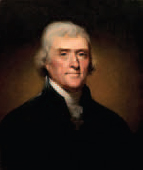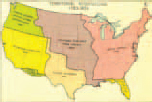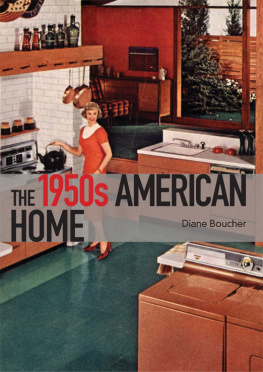HOME SWEET HOME
Around the House
in the 1800s
DAILY LIFE IN AMERICA IN THE 1800s
Bleeding, Blistering, and Purging: Health and Medicine in the 1800s
Buggies, Bicycles, and Iron Horses: Transportation in the 1800s
Cornmeal and Cider: Food and Drink in the 1800s
America at War: Military Conflicts at Home and Abroad in the 1800s
From the Parlor to the Altar: Romance and Marriage in the 1800s
Guardians of the Home: Womens Lives in the 1800s
Home Sweet Home: Around the House in the 1800s
Jump Ropes, Jacks, and Endless Chores: Childrens Lives in the 1800s
Reviving the Spirit, Reforming Society: Religion in the 1800s
Outlaws and Lawmen: Crime and Punishment in the 1800s
Passing the Time: Entertainment in the 1800s
Rooting for the Home Team: Sports in the 1800s
Scandals and Glory: Politics in the 1800s
The Sweat of Their Brow: Occupations in the 1800s
Saloons, Shootouts, and Spurs: The Wild West In the 1800s
HOME SWEET HOME
Around the House
in the 1800s
by
Zachary Chastain
Mason Crest Publishers
Copyright 2011 by Mason Crest Publishers. All rights reserved. No part of this publication may be reproduced or transmitted in any form or by any means, electronic or mechanical, including photocopying, recording, taping, or any information storage and retrieval system, without permission from the publisher.
MASON CREST PUBLISHERS INC.
370 Reed Road
Broomall, Pennsylvania 19008
(866)MCP-BOOK (toll free) www.masoncrest.com
First Printing|
9 8 7 6 5 4 3 2 1
Library of Congress Cataloging-in-Publication Data
Chastain, Zachary.
Home sweet home : around the house in the 1800s / by Zachary Chastain.
p. cm. (Daily life in America in the 1800s)
Includes bibliographical references and index.
ISBN 978-1-4222-1781-8 (hardcover) ISBN (series) 978-1-4222-1774-0
ISBN 978-1-4222-1854-9 (pbk.) ISBN (pbk. series) 978-1-4222-1847-1
1. DwellingsUnited StatesHistory19th centuryJuvenile literature. 2. Home United StatesHistory19th centuryJuvenile literature. 3. Home economicsUnited StatesHistory19th centuryJuvenile literature. 4. United StatesSocial life and customs19th centuryJuvenile literature. I. Title.
GT207.C47 2011
392.3609730909034dc22
2010019182
Produced by Harding House Publishing Service, Inc.
www.hardinghousepages.com
Interior Design by MK Bassett-Harvey.
Cover design by Torque Advertising + Design.
Printed in USA by Bang Printing.
Contents
History can too often seem a parade of distant figures whose lives have no connection to our own. It need not be this way, for if we explore the history of the games people play, the food they eat, the ways they transport themselves, how they worship and go to waractivities common to all generationswe close the gap between past and present. Since the 1960s, historians have learned vast amounts about daily life in earlier periods. This superb series brings us the fruits of that research, thereby making meaningful the lives of those who have gone before.
The authors vivid, fascinating descriptions invite young readers to journey into a past that is simultaneously strange and familiar. The 1800s were different, but, because they experienced the beginnings of the same baffling modernity were are still dealing with today, they are also similar. This was the moment when millennia of agrarian existence gave way to a new urban, industrial era. Many of the things we take for granted, such as speed of transportation and communication, bewildered those who were the first to behold the steam train and the telegraph. Young readers will be interested to learn that growing up then was no less confusing and difficult then than it is now, that people were no more in agreement on matters of religion, marriage, and family then than they are now.
We are still working through the problems of modernity, such as environmental degradation, that people in the nineteenth century experienced for the first time. Because they met the challenges with admirable ingenuity, we can learn much from them. They left behind a treasure trove of alternative living arrangements, cultures, entertainments, technologies, even diets that are even more relevant today. Students cannot help but be intrigued, not just by the technological ingenuity of those times, but by the courage of people who forged new frontiers, experimented with ideas and social arrangements. They will be surprised by the degree to which young people were engaged in the great events of the time, and how women joined men in the great adventures of the day.
When history is viewed, as it is here, from the bottom up, it becomes clear just how much modern America owes to the genius of ordinary people, to the labor of slaves and immigrants, to women as well as men, to both young people and adults. Focused on home and family life, books in this series provide insight into how much of history is made within the intimate spaces of private life rather than in the remote precincts of public power. The 1800s were the era of the self-made man and women, but also of the self-made communities. The past offers us a plethora of heroes and heroines together with examples of extraordinary collective action from the Underground Railway to the creation of the American trade union movement. There is scarcely an immigrant or ethic organization in America today that does not trace its origins to the nineteenth century.
This series is exceptionally well illustrated. Students will be fascinated by the images of both rural and urban life; and they will be able to find people their own age in these marvelous depictions of play as well as work. History is best when it engages our imagination, draws us out of our own time into another era, allowing us to return to the present with new perspectives on ourselves. My first engagement with the history of daily life came in sixth grade when my teacher, Mrs. Polster, had us do special projects on the history of the nearby Erie Canal. For the first time, history became real to me. It has remained my passion and my compass ever since.
The value of this series is that it opens up a dialogue with a past that is by no means dead and gone but lives on in every dimension of our daily lives. When history texts focus exclusively on political events, they invariably produce a sense of distance. This series creates the opposite effect by encouraging students to see themselves in the flow of history. In revealing the degree to which people in the past made their own history, students are encouraged to imagine themselves as being history-makers in their own right. The realization that history is not something apart from ourselves, a parade that passes us by, but rather an ongoing pageant in which we are all participants, is both exhilarating and liberating, one that connects our present not just with the past but also to a future we are responsible for shaping.
Dr. John Gillis, Rutgers University
Professor of History Emeritus
1800
1800 The Library of Congress is established.
1801
1801 Thomas Jefferson is elected as the third President of the United States.

1803
1803 Louisiana PurchaseThe United States purchases land from France and begins westward exploration.

1804
1804 Journey of Lewis and ClarkLewis and Clark lead a team of explorers westward to the Columbia River in Oregon.
Next page











